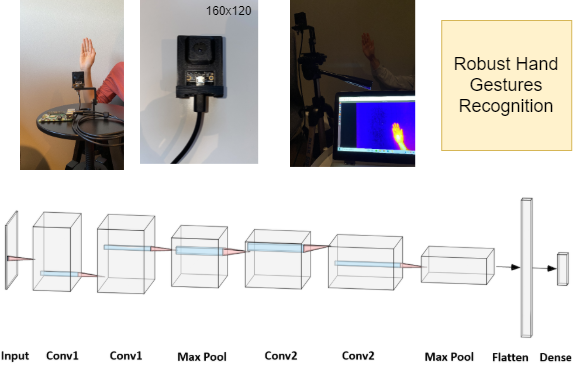Rajesh Reddy Yakkati, Rakesh Reddy Yakkati, Rajesh Kumar Tripathy and Linga Reddy Cenkeramaddi, “Radio Frequency Spectrum Sensing by Automatic Modulation Classification in Cognitive Radio System using Multiscale Deep CNN,” has been accepted for publication in the IEEE Sensors Journal (2021).
Keywords:Modulation,Signal to noise ratio,Binary phase shift keying,AWGN channels, Rayleigh channels,Convolutional neural networks,Feature extraction
Abstract:Automatic modulation categorization (AMC) is used in many applications such as cognitive radio, adaptive communication, electronic reconnaissance, and non-cooperative communications. Predicting the modulation class of an unknown radio signal without having any prior information of the signal parameters is challenging. This paper proposes a novel multiscale deep-learning-based approach for the automatic modulation classification using radio signals. The approach considered the fixed boundary range-based Empirical wavelet transform (FBREWT) based multiscale analysis technique to decompose the radio signal into sub-band signals or modes. The sub-band signals computed from the radio signal combined with the deep convolutional neural network (CNN) are used to classify modulation types. The approach is tested using the radio signals of different signal-to-noise ratio (SNR) values and four different channel types such as additive white Gaussian noise (AWGN) combination of Rayleigh fading and AWGN channels, the combination of Rician flat fading and AWGN channels, and combination of Nakagami-m fading and AWGN channels for AMC. The results show that the proposed FBREWT based deep-learning approach achieves an overall classification accuracy of 97% for AMC using the radio signals with 10dB SNR for the AWGN channel. Moreover, the proposed approach has obtained the accuracy’s as 94.56%, 95%, and 97.33% using radio signals with 10 dB SNR values for Rayleigh fading, Rician flat fading, and Nakagami-m fading channels combined through AWGN link. The comparison of the proposed multiscale deep learning-based approach with existing methods is shown for AMC.
More details:DOI: 10.1109/JSEN.2021.3128395
